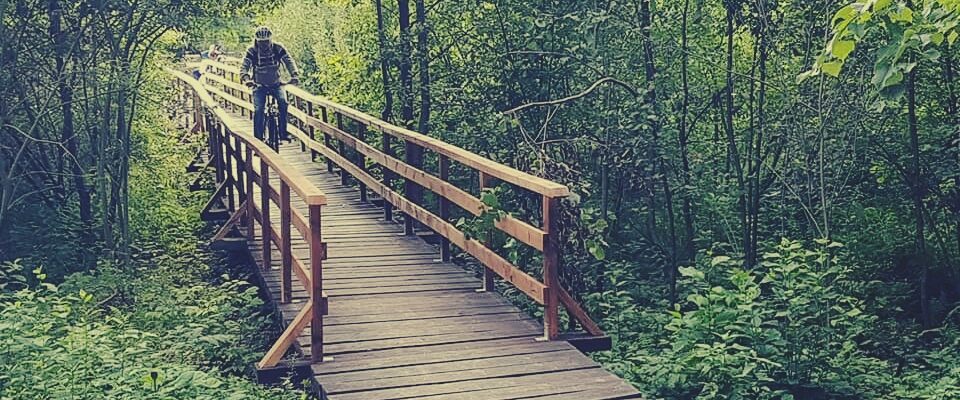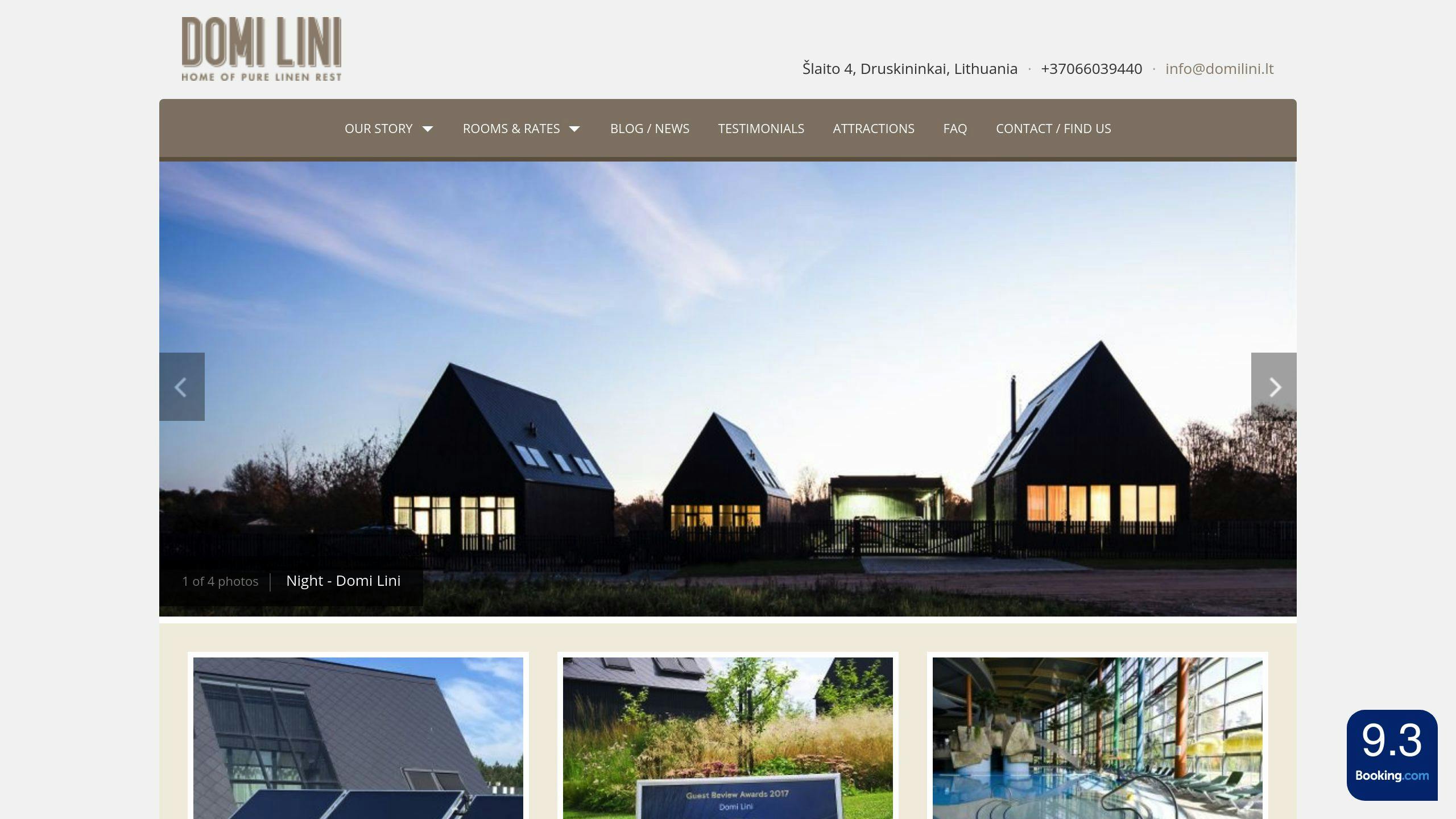
Baltic communities are leading the way in green tourism by focusing on protecting nature, preserving heritage, and boosting local economies. Here’s how they’re making a difference:
- Community-Led Initiatives: Projects like Lithuania’s rural tourism training and Estonia’s Pärnu Bay conservation efforts combine environmental care with tourism growth.
- Eco-Friendly Lodging: Accommodations like Lithuania’s Domi Lini use renewable energy and sustainable practices to reduce environmental impact.
- Cultural and Environmental Balance: Examples include Finland’s Archipelago Sea and Germany’s Rügen Island, where tourism coexists with conservation.
Key Challenges:
- Over-tourism and pollution threaten fragile ecosystems.
- High costs make sustainable practices hard for some businesses.
Opportunities:
- Public-private partnerships and eco-tourism projects, like Lithuania’s European Green Belt initiative, show potential for growth.
- Low-impact travel options, such as bike tourism, are gaining popularity.
The Baltic region demonstrates how communities can lead in balancing tourism with environmental and cultural preservation.
Sustainable Rural Tourism
Community Contributions to Green Tourism
Community-Led Tourism Initiatives
In the Baltic region, local communities play a key role in promoting sustainable tourism by combining care for the environment with cultural preservation. For example, in Finland’s Archipelago Sea region, locals work closely with authorities to ensure tourism development aligns with environmental protection efforts [1].
This collaboration highlights how community involvement can strengthen sustainable tourism. In Lithuania’s Aukštaitija National Park, community-driven programs emphasize eco-friendly lodging and local cuisine while safeguarding historical landmarks and traditional crafts [3]. These efforts build on earlier initiatives, such as the Lithuanian Countryside Tourism Association‘s training programs, which have helped communities refine their approaches to sustainable tourism.
Examples of Successful Community Projects
Estonia’s Pärnu Bay project is a standout example of how communities can work together effectively. Local authorities, environmental groups, and fishermen collaborate to protect fish stocks while encouraging eco-tourism in the area [1]. Similarly, Lithuania’s ‘Atrask.eu’ project focuses on promoting tourism in lesser-known regions, boosting local economies and preserving cultural heritage [4].
On Rügen Island in Germany, community-led efforts have successfully balanced tourism with conservation through dune protection initiatives and visitor education programs [1]. These examples demonstrate how community-driven projects can support sustainable tourism, a trend further reinforced by the growing number of eco-friendly accommodations across the Baltic region.
sbb-itb-36c9128
Green Accommodations in the Baltic Region
Why Eco-Friendly Lodging Matters
Eco-friendly lodgings in the Baltic region aim to minimize tourism’s impact on the environment by embracing renewable energy, cutting down waste, and conserving water. Beyond just being environmentally conscious, these accommodations offer travelers hands-on experiences that highlight sustainable practices. By staying in such places, visitors actively reduce their travel footprint while also contributing to local conservation initiatives.
Domi Lini: A Lithuanian Example

Domi Lini, located in Druskininkai, sets a great example of sustainable tourism. The property uses geothermal heating, solar-powered water systems, and EV charging stations, while also maintaining gardens that support local biodiversity. It successfully combines eco-conscious practices with guest comfort, proving that luxury and environmental care can go hand in hand.
This philosophy aligns with broader regional initiatives, like those from the Lithuanian Countryside Tourism Association, which advocate for sustainable tourism [2]. By incorporating thoughtful design and green technologies, places like Domi Lini help position the Baltic region as a leader in eco-friendly travel. They offer visitors a chance to enjoy both environmentally responsible and culturally enriching experiences.
These lodgings highlight not just a commitment to the environment but also the community-driven spirit behind sustainable tourism in the Baltic region.
Challenges and Opportunities for Green Tourism in the Baltic Region
Obstacles to Green Tourism
Over-tourism and pollution are putting pressure on the Baltic region’s delicate ecosystems. Take Rügen Island in Germany, for example – strict dune protection and careful visitor management are essential to safeguard its coastal areas [1]. Similarly, the Baltic Sea’s marine life is at risk, requiring a balance between tourism and conservation. In Pärnu Bay, Estonia, local authorities are working with environmental groups and fishing communities to protect fish stocks while keeping the area attractive to visitors [1].
On top of these environmental concerns, many tourism businesses struggle with the high costs and logistical challenges of adopting sustainable practices. While some, like Lithuania’s Domi Lini, have successfully embraced eco-friendly strategies, others find it more difficult. Despite these hurdles, the Baltic region is actively seeking new ways to make tourism more sustainable.
Potential for Growth in Green Tourism
The Baltic region has plenty of room to grow its sustainable tourism efforts. A great example is Finland’s Saaristomeri (Archipelago Sea), where visitor management strategies have helped preserve sensitive habitats without losing the area’s tourism appeal [1].
Public-private partnerships are also making a difference. The Lithuanian Countryside Tourism Association’s eco-tourism project shows how rural entrepreneurs can integrate sustainable practices into their operations [2]. Eco-friendly accommodations, like Domi Lini in Lithuania, further highlight the growing interest in green tourism.
Transportation is another area with exciting possibilities. In Pärnu Bay, Estonia, and Žemaitija National Park, Lithuania, initiatives like bicycle tourism are combining environmental protection with enhanced visitor experiences [1][5]. This aligns perfectly with the increasing demand for low-impact travel options.
| Initiative Type | Example | Impact |
|---|---|---|
| Protected Area Management | Rügen Island, Germany | Balanced tourism with conservation [1] |
| Community Partnership | Pärnu Bay, Estonia | Protected marine resources [1] |
| Rural Tourism Development | Aukštaitija National Park | Promoted local sustainability [3] |
Conclusion: Community Impact on Green Tourism
Key Points Recap
Communities in the Baltic region play a central role in shaping sustainable tourism. By protecting natural resources, celebrating cultural heritage, and adopting eco-conscious practices, they ensure tourism thrives without compromising the environment or traditions. From eco-friendly stays to cultural preservation projects, these efforts showcase how community involvement can successfully balance tourism with conservation.
Take eco-friendly accommodations as an example. Places like Domi Lini show how sustainability can be seamlessly woven into hospitality while also improving guest experiences. This reflects the region’s strong commitment to sustainable tourism practices that benefit both visitors and locals.
How Travelers Can Make a Difference
Travelers have the power to support these efforts by opting for eco-friendly stays and participating in local initiatives. These choices not only aid conservation and local economies but also provide visitors with meaningful and responsible travel experiences.
For instance, the Lithuanian Countryside Tourism Association offers eco-tourism options along the European Green Belt, giving travelers a chance to enjoy genuine experiences while backing local businesses [2]. By making thoughtful decisions, visitors can actively contribute to the Baltic region’s mission to set an example in sustainable tourism.

Leave a Reply